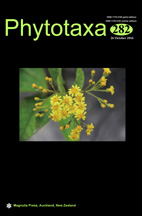Abstract
The genus Amorphophallus is an economically important taxon that is abundant in Old World tropical forests (Asia, Oceania and Africa). It includes many species that are used with increasing frequency as a source of food and pharmaceutical products worldwide. Amorphophallus konjac is an important economic crop and has been used widely in China and Japan for commercial konjac glucomannan (KGM) production. However, the species’ range does not extend to Thailand, where other closely related species may be more suitable for commercial KGM production. Present understanding of genetic relationships among Thai Amorphophallus species is still limited, and the connection between evolutionary history and KGM content is unknown. Here, the genetic relationships among various accessions of Amorphophallus spp. collected in Thailand are investigated using the chloroplast trnL-trnF spacer, nuclear ribosomal internal transcribed spacer (ITS) region and the second intron of LEAFY (FLint2) together with genome-wide DNA variation analysis, Randomly Amplified Polymorphic DNA (RAPD) technique. RAPD primers are also developed to quickly and efficiently identify species producing high levels of KGM. This study finds that two monophyletic clades include high KGM content species. RAPD analyses indicate that primer AC-10 generates specific bands identifying species belonging only to the high and medium KGM content clades. These primers can be used as a screening tool for economical species, aiming at improving the industrial production of KGM in Thailand and the world.

